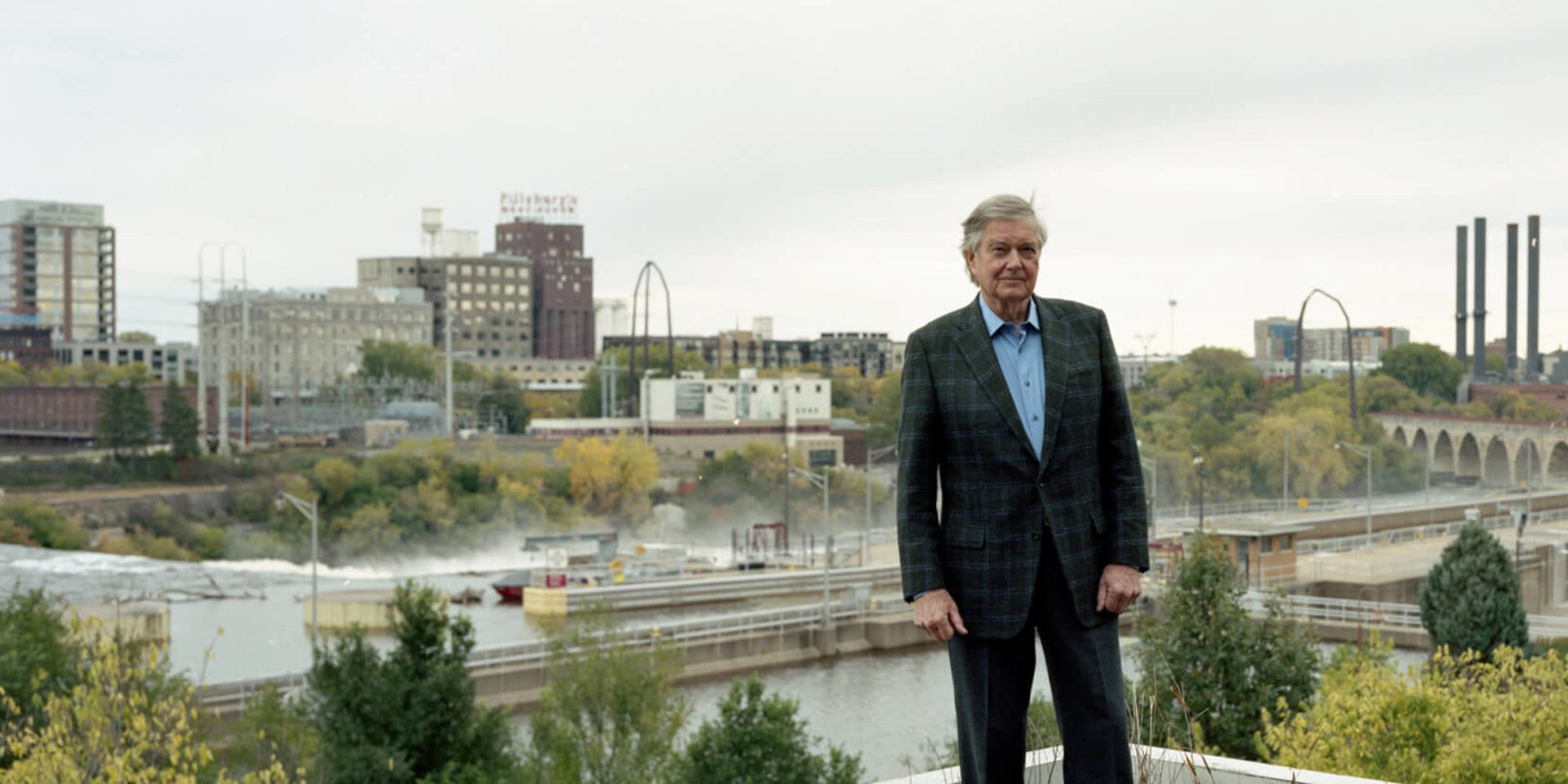Remembering
Paul Reyelts

A few months back, my wife and I were walking through “In Our Hands,” an exhibit of Native photography at the Minneapolis Institute of Art, when I saw Paul Reyelts across the gallery. I walked over to say hello, but stopped short when I saw how absorbed he was in the art. After a long, intent look at one of the photographs, he moved in to read the description, then stood back and reexamined the image. Then he moved to the next piece and did the same thing. He was alone, clearly trying to soak in everything the artist was trying to say.
I knew not to interrupt, because I realized Paul was taking one more step in a multi-year effort to understand and honor the Native history of what we now call Minnesota. While gaining that deeper understanding, he was also making extraordinary contributions to help return Native presence and control to the Minneapolis riverfront. As he did in so many undertakings, this great civic leader went to great lengths to make sure others got the attention and credit.
Today, I’m holding that memory in my heart as I join so many in mourning the sudden and devastating loss of Paul.
To me, that moment in the museum is the perfect metaphor for a life led with purpose and curiosity, with extraordinary doses of generosity and selflessness.
Because Paul was so low-key about his philanthropy, he was best known for an extraordinarily successful business career, especially his time as Chief Financial Officer of Valspar, where he played a key role in building the company into an international giant. But there was a lot more to Paul. When Valspar was sold, he set out to help build great public spaces, especially parks.
Paul was a key founder of the Minneapolis Parks Foundation, and he chaired its RiverFirst campaign, which gave him a deeper understanding of the underappreciated St. Anthony Falls. He quietly funded Water Works at Mill Ruins Park and the restoration of the former Fuji Ya restaurant into a beautiful public place best known as the site of Owamni Restaurant. Paul not only made these exceptional lead gifts, he helped solicit many others to follow.
As Paul learned about the area that the Dakota people call Owámniyomni—the place where it’s said their ancestors came into human form from water—and nearby Wita Wanagi—the sacred Spirit Island that white settlers destroyed—he stepped up to do more. He also realized that, despite his increasing financial contributions, Dakota people should be leading the effort and controlling the land.
He helped form Owámniyomni Okhódayapi, a Dakota-led effort to transform five acres of land next to the Falls’ Upper Locks into a place that uplifts and centers the voices and history of the Dakota people.
The generosity of Paul and his equally generous wife, Mary, does not stop at the Falls. He served for many years on the boards of Minnesota Public Radio and the Minneapolis Foundation. He also made major contributions to MacPhail Center for Music.
Tragically, Paul will not be here to see much of his work completed, so now it’s up to all of us to ensure his work lives on. Toward that end, the Minneapolis Foundation will be making a $50,000 contribution in Paul’s name to Owámniyomni Okhódayapi.
Because of my role at the Minneapolis Foundation, people often come up to me and say something to the effect of, “Minneapolis doesn’t have great philanthropists anymore.” Fortunately, that’s not the least bit true, which I know because I am fortunate to work with so many of them. But if you want a shining example of how to contribute to our community, especially in this moment, look no further than the generous, humble, and transformative works of our loved and deeply missed Paul Reyelts.
—
